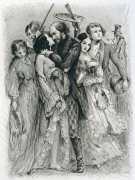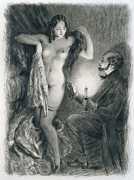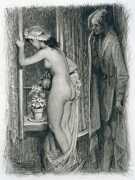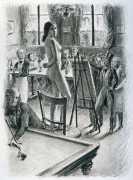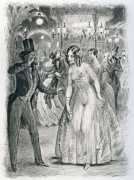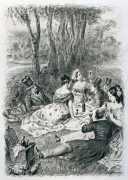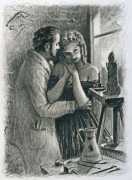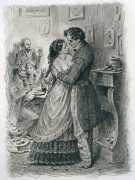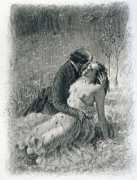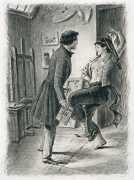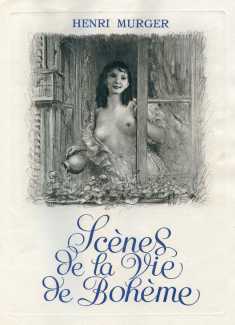 Scènes de la vie de Bohème (Scenes of Bohemian Life) is a collection of loosely connected stories by Henri Murger, first published in serialised form in Le Corsaire from 1845 to 1849, and brought together in book form in 1851. It defined the archetype of the bohemian artist, and had a major influence on both literature and opera.
Scènes de la vie de Bohème (Scenes of Bohemian Life) is a collection of loosely connected stories by Henri Murger, first published in serialised form in Le Corsaire from 1845 to 1849, and brought together in book form in 1851. It defined the archetype of the bohemian artist, and had a major influence on both literature and opera.
Set in the Latin Quarter of Paris during the 1830s and 1840s., the book is not a traditional novel with a continuous plot, but a series of vignettes about a group of impoverished young artists and writers – a poet, Rodolphe, loosely based on Murger himself, a painter, Marcel, a musician, Schaunard, and a philosopher, Colline. They all live hand to mouth, enduring cold, hunger and eviction, but maintain a romantic ideal of art and life. Despite their poverty, their friendships and love affairs are filled with warmth, humour and melancholy.

Henri Murger (full name Louis-Henri Murger, 1822–1861) dropped out of primary school with the intention of becoming a painter, but his lack of skill with a brush led him to writing instead. The son of a tailor who had come to France from Germany, and a seamstress, Murger was a regular at the bars of the Latin Quarter, forming a group known as The Water Drinkers with several friends of limited financial means. They eked out a living wherever they could, and their health was precarious, which led to premature deaths, and they satisfied their sexual needs with prostitutes. Their favourite spot was the Café Momus, but they were also regulars at the Brasserie Des Martyrs. Although he wrote other works, Murger’s literary fame came almost entirely from Scènes de la vie de Bohème.
Thanks to Murger, the term ‘bohemian’ became popular, spawning several subsequent musical works, including operas by Giacomo Puccini and Ruggero Leoncavallo.
For this 1951 illustrated edition, Bécat – who knew the Latin Quarter well – produced some of the best illustrations of the later part of his career.
The Bécat-illustrated Scènes de la vie de Bohème was published by Coillection Athéna Bibliophile in a boxed and numbered limited edition of 996 copies.


